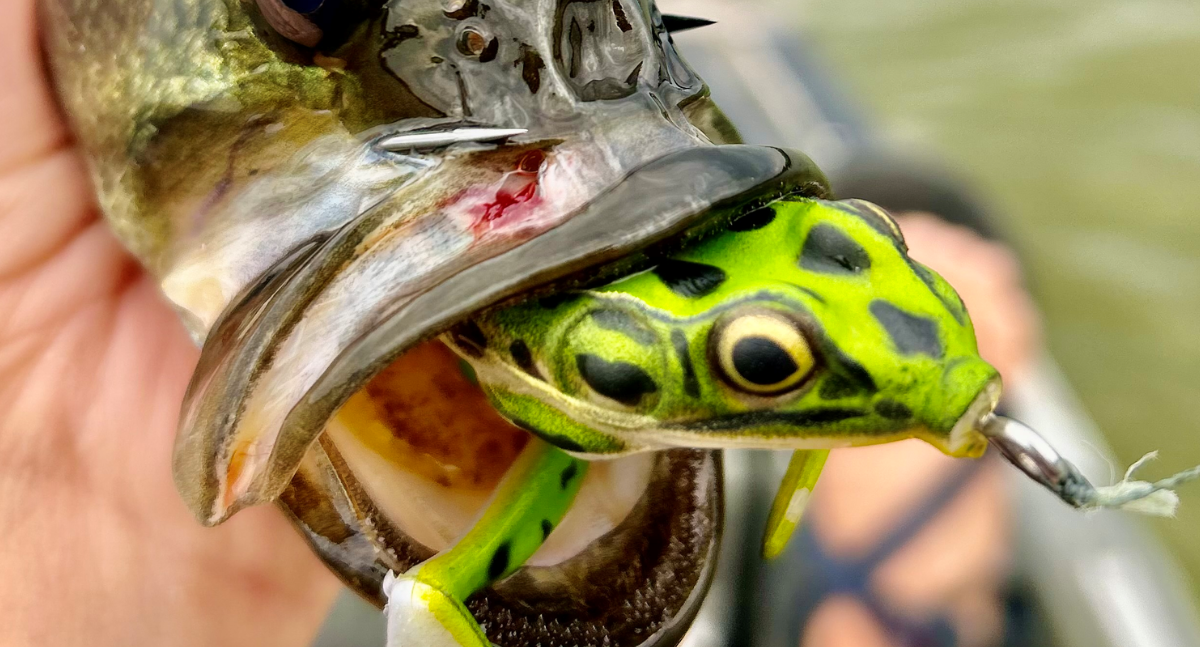Check out the Tricks Behind Efficient Bass Lures to Improve Your Angling Experience
Comprehending the complexities of bass Lures can significantly affect fishing success. Various Lures serve unique objectives, from crankbaits designed for vast coverage to jigs that target specific structures. The efficiency of these Lures frequently depends upon factors such as shade, motion, and seasonal patterns. By mastering these components, anglers can open a much more gratifying experience. Yet, the question continues to be: which techniques will generate the very best results on the water?
Understanding Bass Behavior and Environment
Understanding the habits and habitat of bass is vital for fishermens seeking success on the water. Bass are flexible fish located in numerous freshwater atmospheres, including lakes, fish ponds, and rivers. They tend to like areas with structure, such as immersed rocks, dropped trees, and water vegetation, which give sanctuary and hunting grounds.
Seasonal patterns dramatically affect their actions; in warmer months, bass commonly inhabit superficial waters, while they pull back to much deeper locations during chillier periods. Best Bass Fishing Lures. Their feeding behaviors are opportunistic, with a diet regimen being composed generally of smaller fish, bugs, and crustaceans
Time of day likewise plays a function; bass are a lot more energetic throughout early mornings and late nights. Climate condition can impact their habits as well, as cloudy days might urge superficial feeding, whereas bright sunlight typically drives them to seek cover. Acknowledging these patterns outfits fishermens with the understanding needed for effective fishing methods.
Sorts Of Bass Lures and Their Uses
A selection of bass Lures are crucial tools for fishermens intending to attract this preferred game fish. These Lures can be classified into numerous types, each offering unique objectives. Crankbaits, created to resemble the swimming activity of baitfish, are reliable for covering large locations quickly. Spinnerbaits, featuring revolving blades, create vibrations and flashes that can entice bass hiding in cover. Jigs, with their heavy heads and weedless layout, are optimal for lower fishing, permitting anglers to existing lure near structures where bass commonly prowl. Soft plastics, such as worms and animal lures, offer convenience and can be set up in several means to adjust to differing problems. Topwater lures, like frogs and poppers, are best employed throughout low-light hours when bass are actively eating the surface area. Each sort of lure plays a critical role in improving fishing experiences and increasing the chance of successful catches.

Design and color: What Brings In Bass?
What variables influence bass attraction to specific lure shades and layouts? The interplay of light, water clearness, and the all-natural setting plays an essential duty. Intense shades, such as chartreuse and orange, can catch a bass's eye in dirty waters, while extra suppressed tones like eco-friendlies and blues might master clear problems.
Design aspects, consisting of form and motion, also significantly effect bass destination. Lures that imitate all-natural target, such as baitfish or crawfish, are specifically reliable. In addition, the visibility of reasonable details, like fins or ranges, enhances the realistic look, additional attracting bass.
Mental aspects, such as a bass's feeding behaviors and territorial impulses, need to not be forgotten. In specific scenarios, vibrant styles can provoke a reaction from aggressive bass, while subtle variations can interest extra cautious fish. Eventually, understanding design and color nuances is crucial for enhancing lure efficiency.
Matching Lures to Water Conditions
Selecting the ideal lure involves greater than simply color and style; water problems play a considerable duty in figuring out one of the most efficient choices. Variables such as water depth, clearness, and temperature directly affect bass habits and their feeding patterns. In clear water, subtle presentations and all-natural colors have a tendency to be much more efficient, while murky conditions may require brighter, much more vivid Lures that can attract attention.
Temperature additionally affects bass task; during warmer months, faster-moving Lures can elicit strikes, whereas cooler temperatures might require slower, a lot more deliberate discussions. Furthermore, much deeper waters typically require heavier Lures that can reach the wanted deepness, while shallow locations are better fit for lighter, surface-oriented options.
Methods for Reliable Draw Discussion
Mastering the techniques for efficient attraction presentation can considerably improve angling success. Fishermens must focus on the speed and rhythm of their retrieves, adjusting them to imitate the natural movement of prey. A stable retrieve jobs well for numerous attractions, but click this site integrating stops can cause strikes from extra careful fish. Furthermore, differing the depth of the appeal is important; using various casting angles and changing the reel can help target fish at various midsts.
Utilizing a mix of skill discussions, such as twitching or dragging the lure across all-time low, can also be efficient. It is vital for anglers to read the water and adjust their techniques based upon presence and structure. Furthermore, presenting Lures near cover, like immersed rocks or greenery, often generates better results, as bass have a tendency to seek shelter. Ultimately, experimenting with various strategies will bring about a much more rewarding fishing experience.
Seasonal Considerations for Tempt Selection
Seasonal modifications considerably affect bass actions and attraction performance. As water temperature levels vary, fishermens must readjust their lure choices to line up with pre-spawning and post-spawn problems. Understanding these seasonal patterns can improve angling success by targeting bass at their most active times.
Seasonal Water Temperature Level Impacts
As water temperature levels vary throughout the year, bass habits and feeding patterns alter, influencing the performance of numerous lures. During chillier months, bass have a tendency to come to be sluggish, preferring slow-moving Lures that resemble struggling prey. In contrast, as temperatures increase in springtime, bass come to be more active, making faster, more hostile Lures effective. Mid-summer sees bass seeking much deeper, cooler waters, necessitating the use of Lures that can reach these depths. As temperatures start to decrease in loss, bass typically feed heavily in preparation for wintertime, making flexible Lures that can mimic a selection of forage kinds specifically effective. Recognizing these seasonal temperature level results permits fishermens to choose ideal Lures that align with bass actions, optimizing their angling success.
Pre-Spawning Entice Choices
What variables affect the option of Lures during the pre-spawning duration for bass? Fishermens need to consider water temperature level, climate condition, and the bass's feeding behavior. As temperature levels increase and days lengthen, bass become extra energetic and aggressive, motivating a change in their feeding patterns. During this time, entices that imitate the natural target of bass-- such as shad or bluegill-- are specifically efficient. Popular choices consist of spinnerbaits, lipless crankbaits, and jigs, which can be fished at different depths. go to this website Additionally, fishermens need to concentrate on areas with cover, such as immersed plants or rocky structures, as these places often bring in pre-spawn bass. Best Bass Fishing Lures. Comprehending these aspects can dramatically improve the chances of an effective fishing expedition during this crucial seasonal phase
Post-Spawn Techniques Adjustments
Post-spawn bass exhibit various habits than throughout the pre-spawn stage, effective appeal option remains essential for fishermens aiming to target them effectively. After generating, bass typically come to be lethargic and seek deeper waters, making it important to change appeal options as necessary. Anglers must take into consideration using slower-moving baits, such as jigs or soft plastics, which can entice bass that are less hostile. Crankbaits with a refined activity can also be effective, permitting a slower presentation that simulates the all-natural post-spawn forage. Additionally, fishing near structure, such as immersed plant life or rocks, can increase possibilities of success. By understanding these seasonal adjustments, anglers can enhance their fishing experience and that site enhance their catch prices during the post-spawn duration.
Frequently Asked Questions
Exactly how Do I Choose the Right Rod for Bass Fishing?
To select the ideal pole for bass angling, one ought to take into consideration the pole's power, action, and length. A medium to medium-heavy rod, around 6 to 7 feet, is frequently excellent for versatility and control.

What Is the most effective Time of Day to Catch Bass?
The ideal time of day to catch bass is normally early morning and late afternoon. During these periods, bass are a lot more active, feeding near the surface, making them less complicated targets for anglers utilizing effective attractions.
Just How Do Weather Conditions Influence Bass Fishing Success?
Weather condition conditions significantly influence bass fishing success. Warmer temperatures and overcast skies commonly encourage bass activity, while cold fronts can cause lethargy. Rain can likewise improve feeding behavior, making it vital for fishermens to adapt their approaches appropriately.
Can I Utilize Lures for Other Fish Species?
Yes, lures developed for bass can also work for other fish varieties. Picking the suitable dimension, color, and activity according to the target varieties and their feeding habits stays important for success.
What Prevail Errors When Utilizing Bass Lures?
Common mistakes when making use of bass Lures consist of choosing unacceptable dimensions or shades, fetching as well swiftly, failing to adjust to climate condition, and not taking into consideration water deepness. These errors can considerably reduce the opportunities of an effective catch.
As water temperatures fluctuate throughout the year, bass actions and feeding patterns alter, influencing the effectiveness of numerous attractions. Mid-summer sees bass seeking much deeper, cooler waters, demanding the usage of Lures that can get to these midsts. Post-spawn bass exhibit various habits than during the pre-spawn stage, efficient lure choice remains important for anglers intending to target them effectively. After generating, bass frequently become inactive and seek much deeper waters, making it essential to readjust appeal selections accordingly. Usual errors when utilizing bass Lures include selecting unsuitable dimensions or colors, retrieving as well quickly, stopping working to adjust to weather problems, and not considering water deepness.